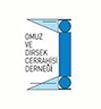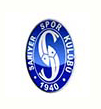Shoulder
Normal Anatomy of Shoulder Joint
Shoulder Arthroscopy
Injury, overuse, and age-related wear and tear are responsible for most shoulder problems. Shoulder arthroscopy may relieve painful symptoms of many problems that damage the rotator cuff tendons, labrum, articular cartilage, and other soft tissues surrounding the joint.
You can use the following buttons for more information
Meniscal Repair
Meniscus is the C-shaped two pieces of cartilage located between thighbone and shin bone that act as shock absorbers and cushion the joints. Meniscus distributes the body weight uniformly across the joint and avoids the pressure on any one part of the joint and development of arthritis.
Being the weight bearing part, meniscus is prone to wear and tear and meniscal tear is one of the common knee injuries. Meniscal tear may be developed by people of all ages and is more common in individuals who play contact sports.
You can use the following buttons for more information
Shoulder Stabilization
Shoulder instability is a chronic condition that causes frequent dislocations of the shoulder joint. A dislocation occurs when the end of the humerus (the ball portion) partially or completely dislocates from the glenoid (the socket portion) of the shoulder. A partial dislocation is referred to as a subluxation whereas a complete separation is referred to as a dislocation. The repeated dislocation of the humerus out of its socket is called chronic shoulder instability. A tear in the labrum or rotator cuff and ligament tear in the front of the shoulder (a Bankart lesion) may lead to repeated shoulder dislocations.
You can use the following buttons for more information
Rotator Cuff Repair
Rotator cuff is the group of tendons in the shoulder joint providing support and enabling wider range of motion. Major injury to these tendons may result in tear of these tendons and the condition is called as rotator cuff tear. It is one of the most common causes of shoulder pain in middle aged adults and older individuals.
It may occur with repeated use of arm for overhead activities, while playing sports or during motor accidents. Rotator cuff tear causes severe pain, weakness of the arm, and crackling sensation on moving shoulder in certain positions. There may be stiffness, swelling, loss of movements, and tenderness in the front of the shoulder.
You can use the following buttons for more information
Shoulder Exercise
Pendulum: Lean forward and place one hand on a counter or table for support. Let your other arm hang freely at your side. Gently swing your arm forward and back. Repeat the exercise moving your arm side-to-side, and repeat again in a circular motion. Repeat the entire sequence with the other arm.
You can use the following buttons for more information
-









 KNEE
KNEE HIP
HIP SHOULDER
SHOULDER SPORT
SPORT TRAUMA
TRAUMA FOOT
FOOT PATIENT FORMS
PATIENT FORMS CONTACT
CONTACT 



